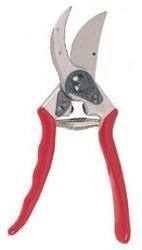Pruning is the outdoor job that causes otherwise well-meaning gardeners to become tree and shrub wreckers.
They don’t mean to ruin their plants, but in the process of cutting them back, they often create a lot of damage and promote growth patterns that lead to – you guessed it – more cutting back.
What cutting back can’t do

It seems that the most common question when buying trees or shrubs is, “How do I prune it?”
In fact, whacking back can’t do what most people think it can: The height and shape of trees and shrubs is determined by genetics. So, the more sensible question would be: “How big will it grow?”
Yes, there are plants amenable to severe shaping, those used for hedges and topiaries – yews, privet, boxwood, and cedars, for example. But this is a high-maintenance game that most people reject in favor of a more carefree style of gardening.
Sensible advice about cutting back shrubs and trees
The reasons for pruning woody plants are simple – to correct flawed form (branches that are growing badly or rubbing), to encourage better growth, to remove dead branches, and to thin out the canopy for more air and light.
To learn how to do this job correctly, I highly recommend Cass Turnbull’s Guide to Pruning.
The trouble with cutting back too much is that it forces you into more pruning because your cuts stimulate growth.
I’ve been a fan of Turnbull’s ever since I heard that she started Plant Amnesty, a Seattle-based nonprofit organization devoted to educating gardeners about the senseless mutilation of garden shrubs and trees.
Turnbull, a woody plant expert and landscaper, has been teaching correct pruning practices for more than 20 years. Her book includes detailed illustrations and she shows you with clearly written step-by-step instructions throughout how to stop committing crimes against nature when cutting woody plants back.
Although this book is published by a Northwest US regional publisher, most of the plants covered in the book are found in gardens and backyards throughout much of the US and Canada.
The book covers:
- Evergreen and deciduous shrubs
- Roses, forsythias, bamboo and other cane-type shrubs
- Rhododendrons, witch hazel, camellia and other tree-like plants
- Hedge plants such as boxwood, laurel and photinia
- Wisteria, clematis and other vines
- Trees, from dogwoods to weeping cherries
So if you’re looking for a readable book about real world pruning, this one is humorously written and reasonably priced.
Canadian visitors: Purchase Cass Turnbull’s book at Amazon.ca.
If you’re always having to prune…
If you have to prune a shrub three or four times a season, it is in the wrong place. So either get rid of it or transplant it to where it can get as high and wide as it’s supposed to.Then in its place, plant a shrub that’s a better fit.
Remember, your yard is not an old age home for has-been woody plants. So just because you (or the previous owner of your house) planted a shrub or a tree in the wrong place doesn’t mean it has to stay there forever.




